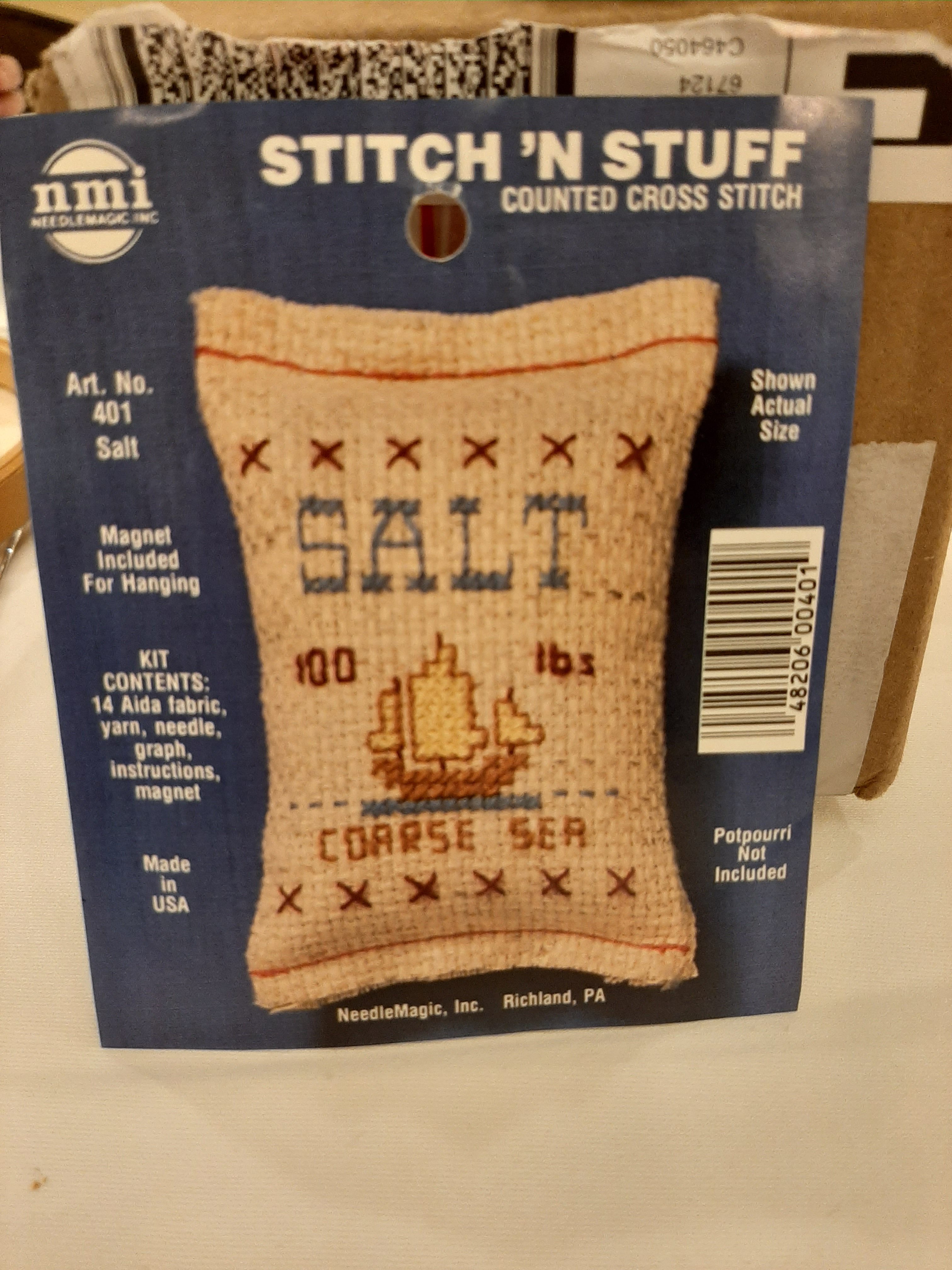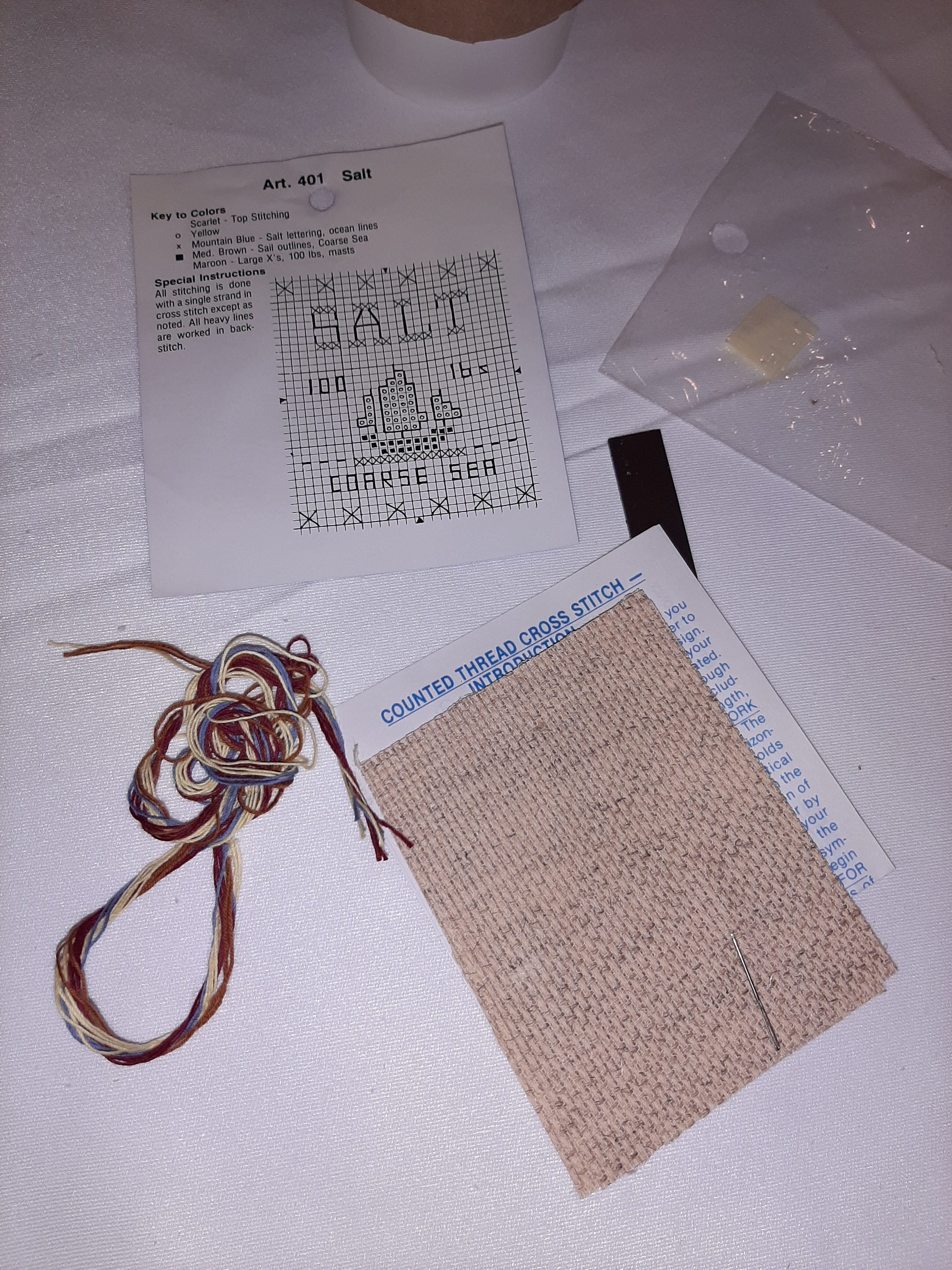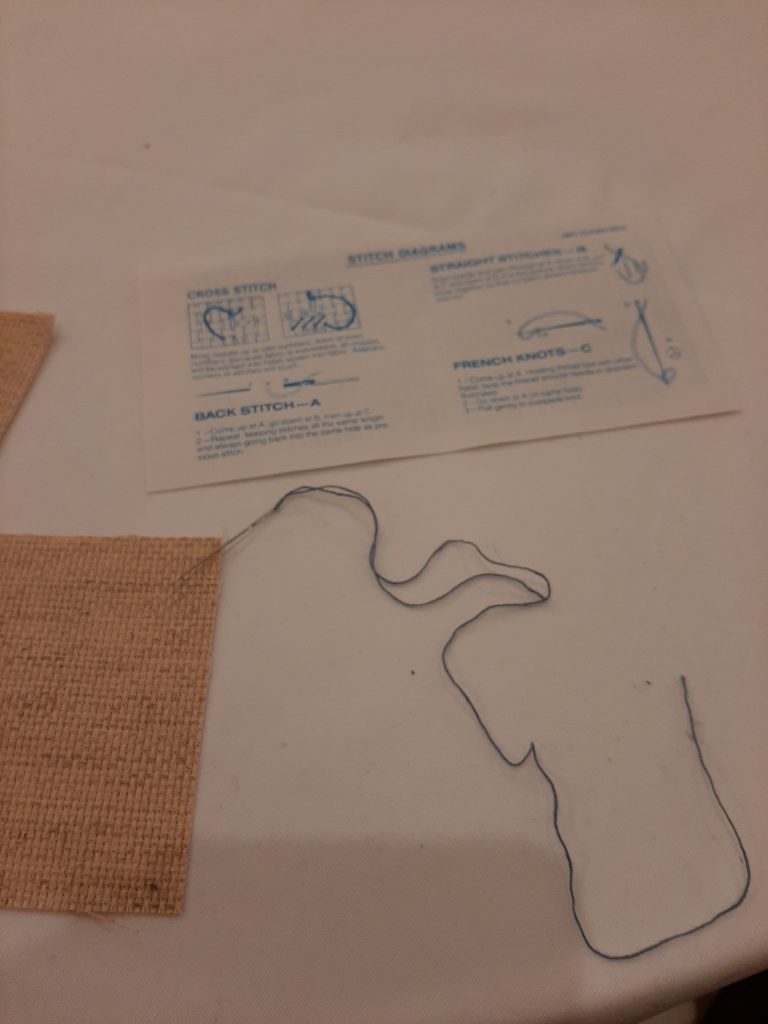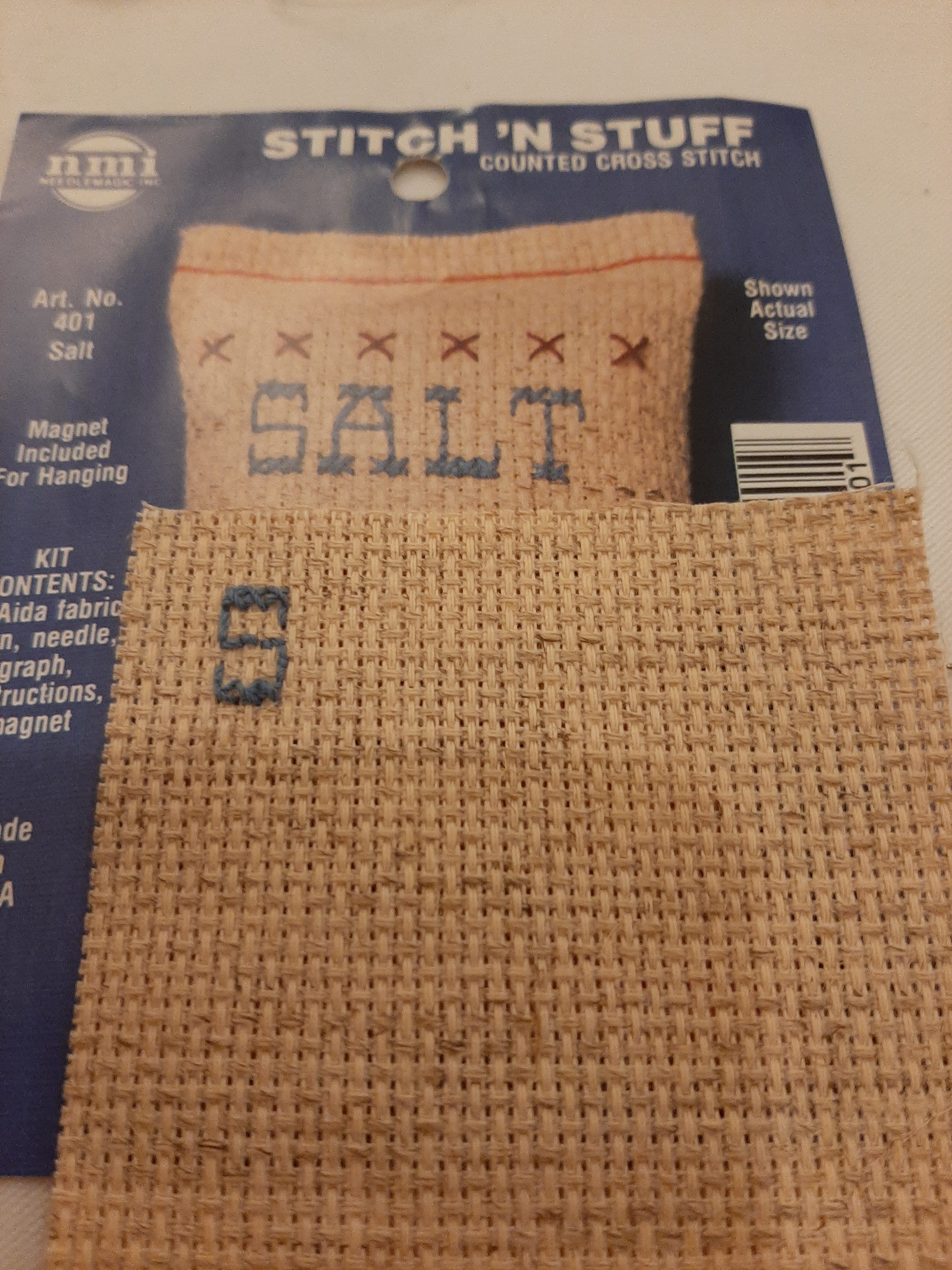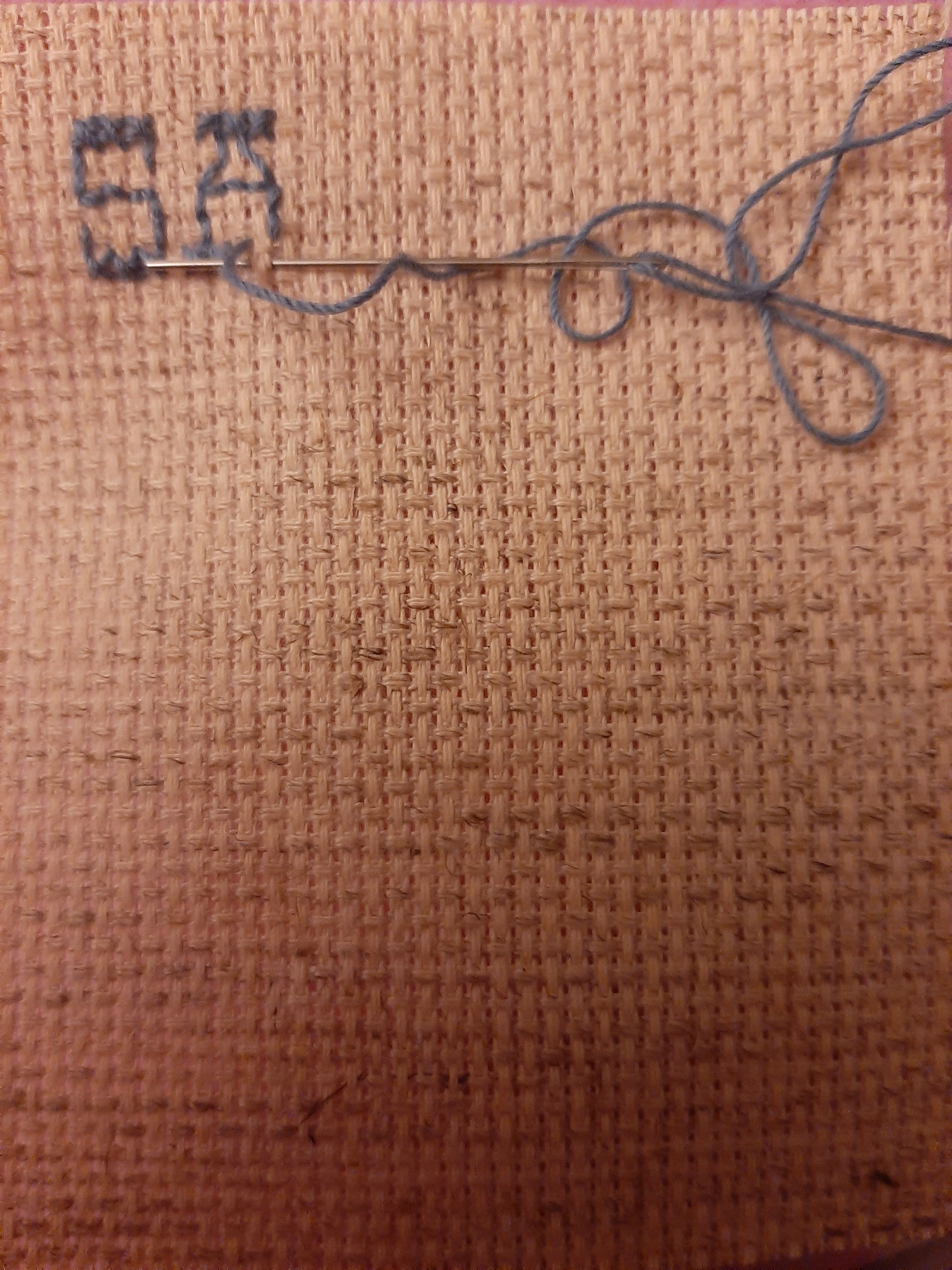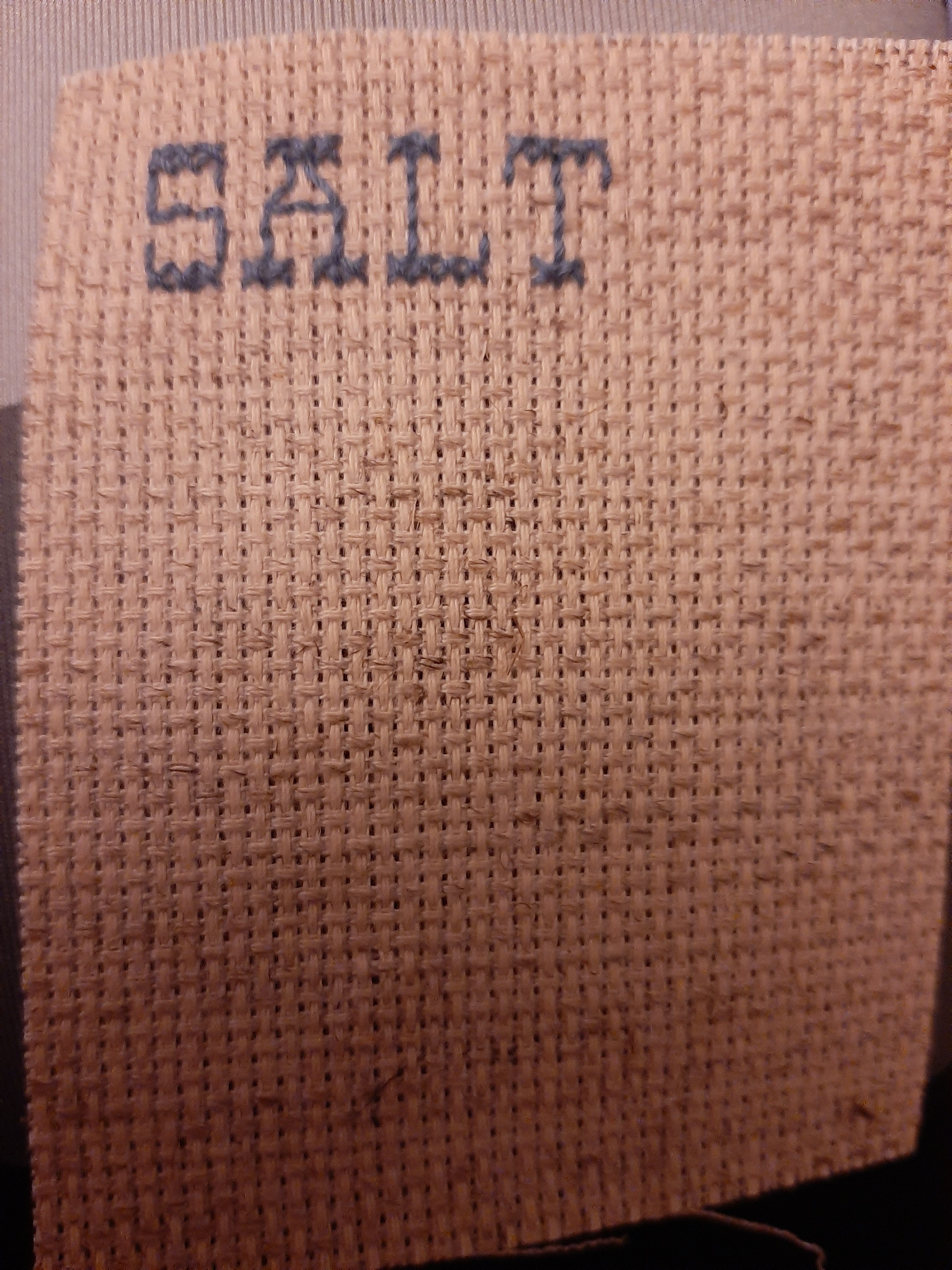Captivating- I was thrilled when I saw we were going to cross-stitch. I grew up with this activity. It’s practically a pre-req for living in the US Midwest. Almost everyone I knew growing up had a piece of needlework in their house (and most still do) and did needlework. I cannot count how many samplers, table runners, Christmas ornaments, and pillows I have made and given away as gifts over the years, and embroidery/cross-stitch were some of my first wearables. I had a yellow dress with cross-stitched daisies on the bodice and hem my mom had made. Cross-stitch has always been a visible interface for me. But, looking at it from a textuality perspective and interacting with it as an interface was much different.
My colleagues, Bruce and Jen, and I completed this TP at a conference in Chicago. During one of our breaks, we brought the supplies down to the main conference area and I set about showing them how to sew the patterns. It was just as fun as it had always been, but the needle eye and the aida cloth holes have become MUCH smaller over the years (I had to borrow Bruce’s cheaters). Soon enough, we had several conference attendees around our table, giving advice and debating which techniques were better than others- creating text and talking about the interface. It made me think about the types of messages and wording that are usually on a cross-stitch- something nostalgic, familiar, and homey. Our kit was a magnet with a picture of a ship and burlap bag of coarse sea salt. It made me think about what this imagery says to people, but it also made me think about what this interface says to people. This medium is the message (McLuhan, 1964). When I look at a piece of cross-stitch work, I read the letters, but it is symbolic of much more. The cloth and the thread hold and relay more meaning and culture than an alphabet border ever could.

